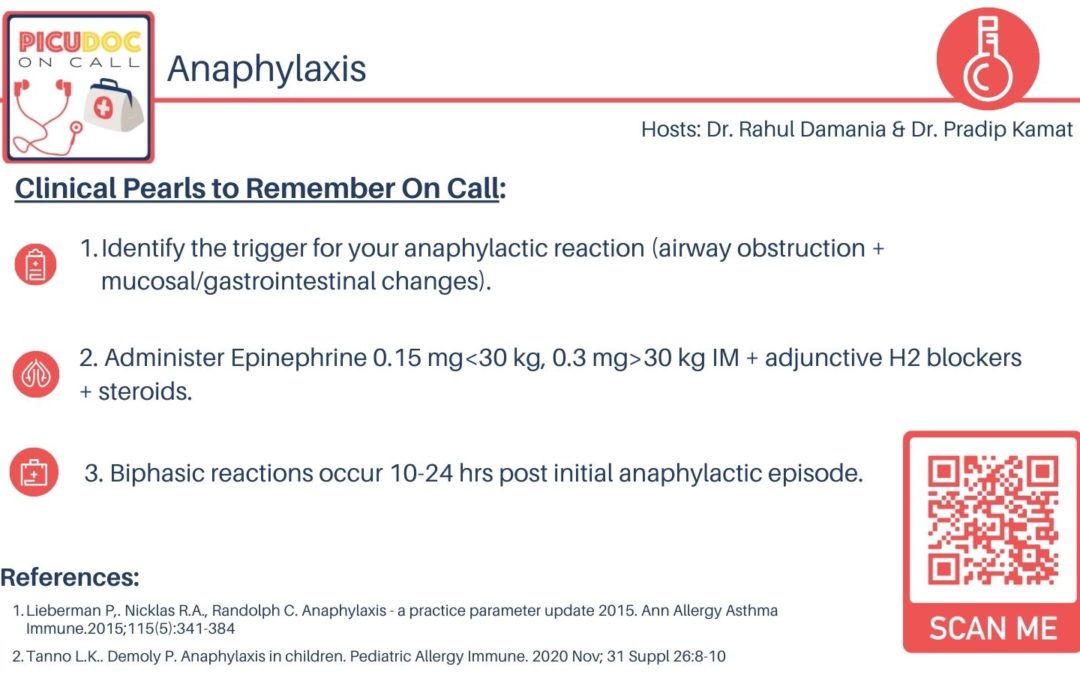Welcome to the first episode of our podcast for current and aspiring intensivists. Our panel of medical professionals and students will examine specific patient cases, symptoms, and treatments. Today’s episode focuses on anaphylaxis. Join us!
>>Click here to download the PICU card for this episode<<
Show Highlights:
- Our case: a four-year-old is admitted to PICU, and TPN has been administered.
- Symptoms: dyspnea, wheezing, strider, and urticaria
- Vitals: hypotensive, tachycardic, with stats dropping rapidly
- What is anaphylaxis? An acute, life-threatening, systemic allergic reaction that can lead to death by airway obstruction or cardiovascular collapse.
- Anaphylaxis symptoms include skin, mucosal, respiratory, cardiovascular, and gastrointestinal symptoms that develop within one hour of exposure to the allergen.
- Anaphylaxis triggers can include allergens, biologics, immunotherapy, and radio-contrast media.
- The anaphylaxis reaction ends with distributive shock, manifested by low cardiovascular output, low systemic vascular resistance, and high pulmonary vascular resistance.
- Acute management of an anaphylaxis reaction includes airway, circulation, and breathing management, and epinephrine (the dosing is different from code dose).
- Watch out for hypotension and lower airway obstruction as possible complications, which can be managed with fluids and nebulized albuterol.
- Adjunctive therapies include histamine blockers and steroids.
- Post-anaphylaxis care:
- Focus on observation of the patient for 10-24 hours.
- Watch for a biphasic reaction.
- At discharge, provide two prescriptions for epinephrine, education for the patient and family, and a medical alert bracelet for the patient to wear.

